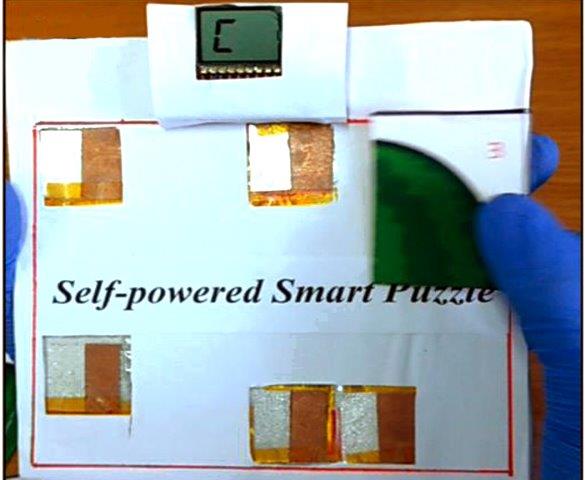FOR IMMEDIATE RELEASE
ACS News Service Weekly PressPac: July 19, 2017
Smart toys without the batteries
"Sustainable Biomechanical Energy Scavenger toward Self-Reliant Kids’ Interactive Battery-Free Smart Puzzle"
ACS Sustainable Chemistry & Engineering
The greatest challenge in entertaining young children is keeping their toys powered up. Now, one group reports in the journal ACS Sustainable Chemistry & Engineering that they are one step closer to battery-free interactive games.
According to the American Academy of Pediatrics, 97 percent of children in the U.S. under the age of 4 have had some type of exposure to a mobile device. These devices are limited by the batteries’ ability to hold a charge. But in order to eliminate the need for batteries, researchers must have a way to produce and store energy. Scientists are investigating options such as solar cells, like those in many calculators; supercapacitors, found in hybrid car batteries; and small specialized generators. While all these routes face challenges, current designs of triboelectric nanogenerators (TENGs) are complex, heavy, rigid and bulky. Sang-Jae Kim and colleagues wanted to make a lightweight, flexible and simple TENG that could be used in a smart interactive puzzle.
The team designed a smart puzzle TENG from recycled plastics, which made it lightweight, flexible and portable. As the puzzle pieces were placed and pushed down into the proper spots, electricity was generated and an LED display indicated the letter “C” for “correct”. The TENG puzzle was stable over long periods of operation time with little damage to the electrical signal. The researchers say that their smart puzzle shows that TENGs could be used in self-powered smart toys.
The author acknowledges funding from the National Research Foundation of Korea and the South Korea Government.
Note: ACS does not conduct research, but publishes and publicizes peer-reviewed scientific studies.

View Larger Image

